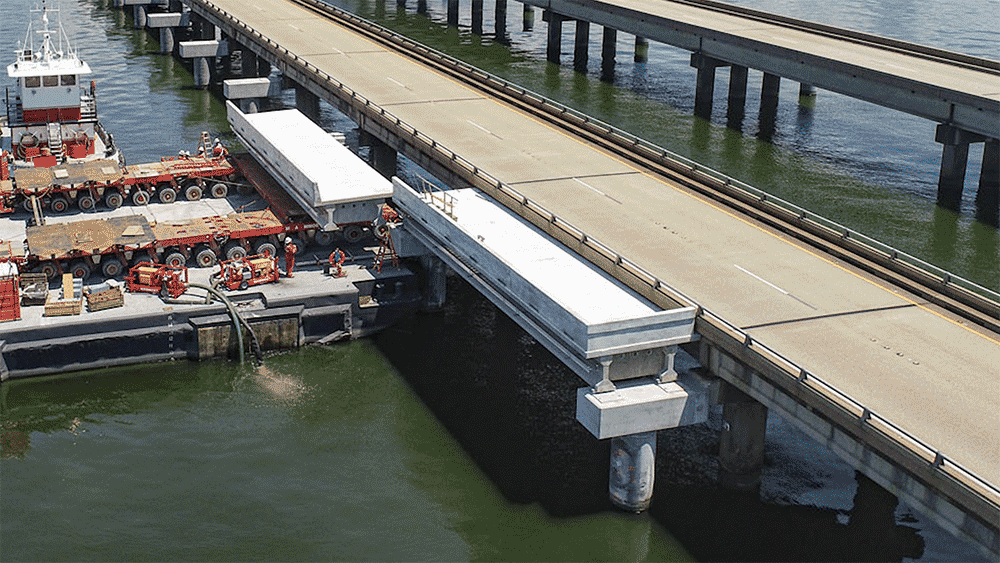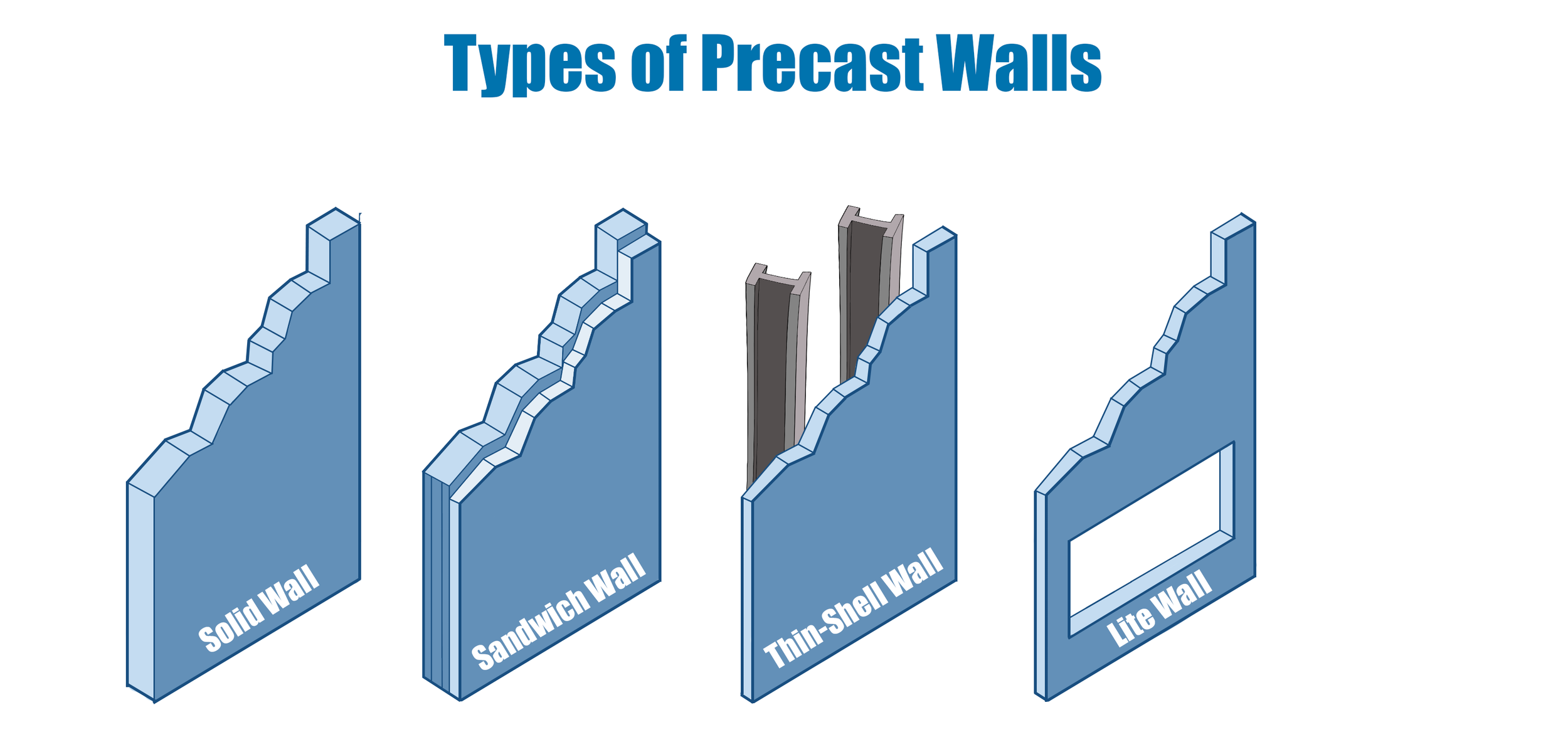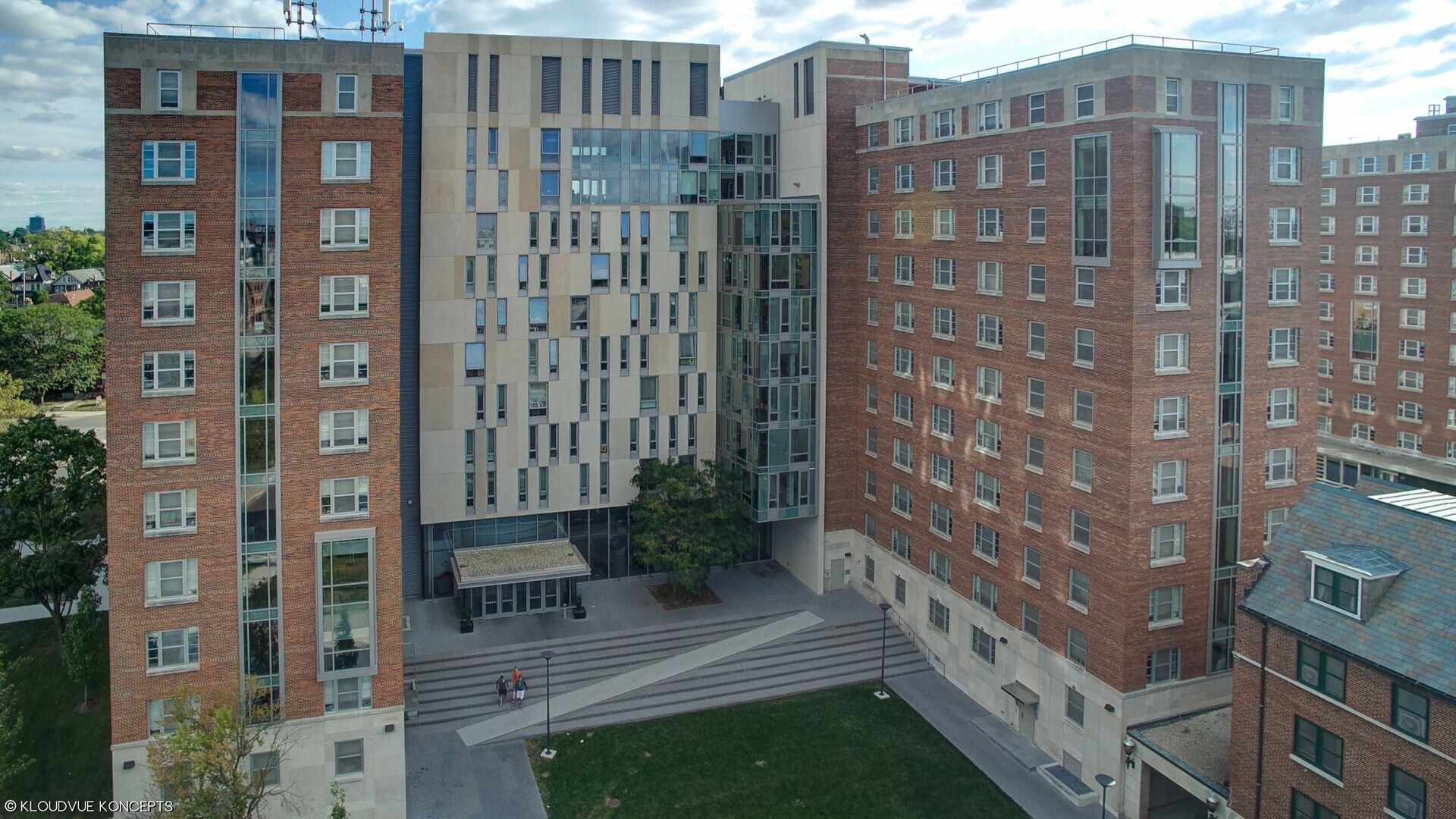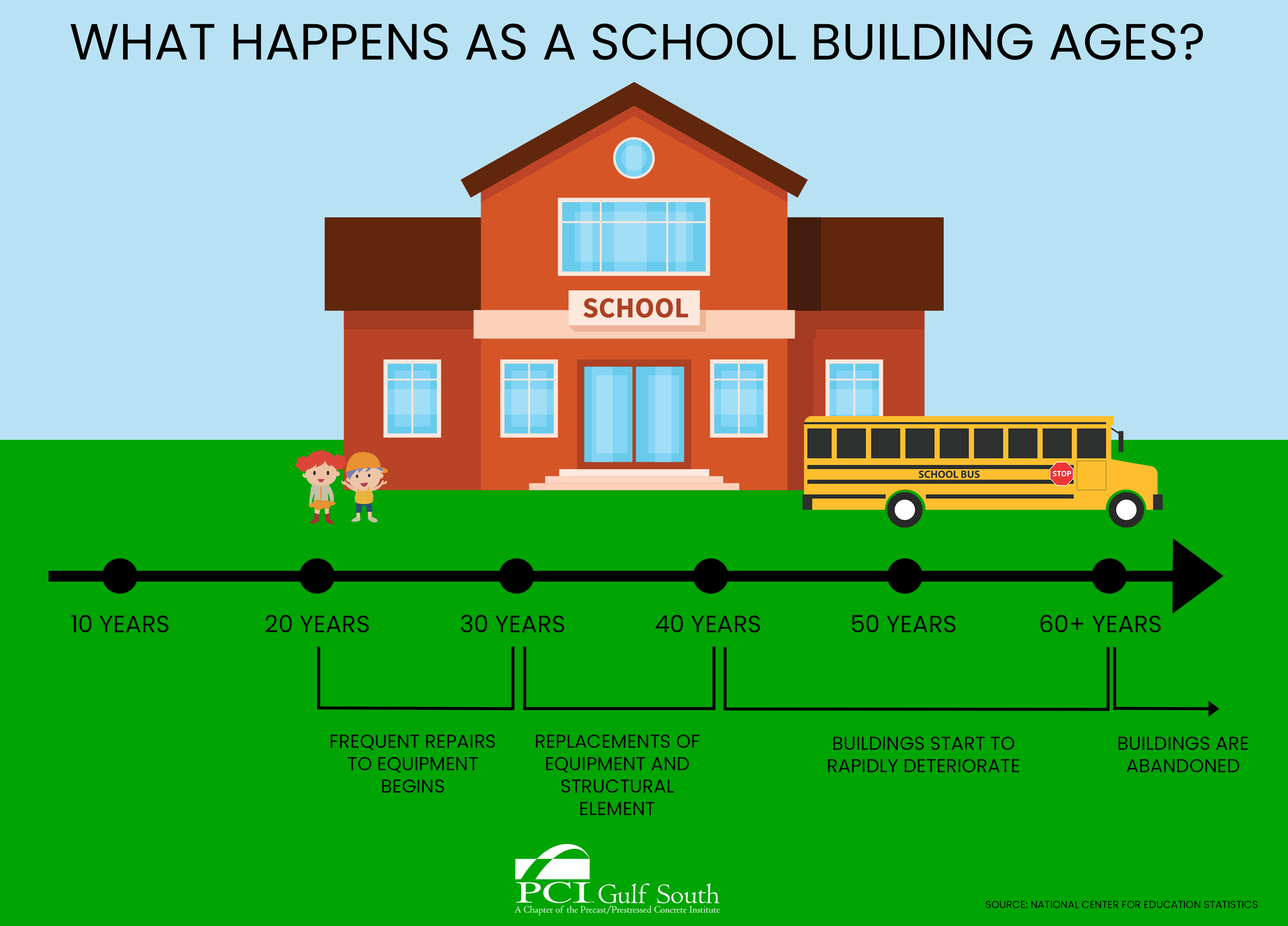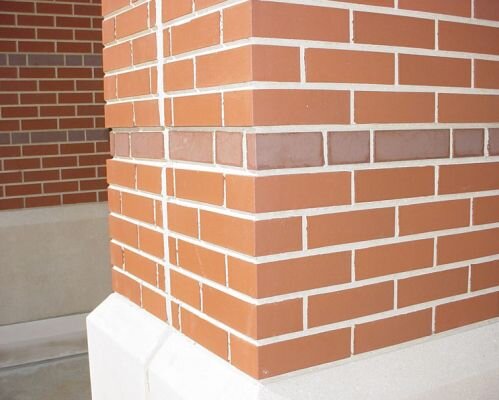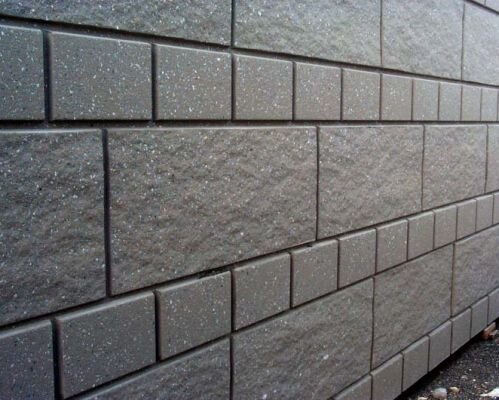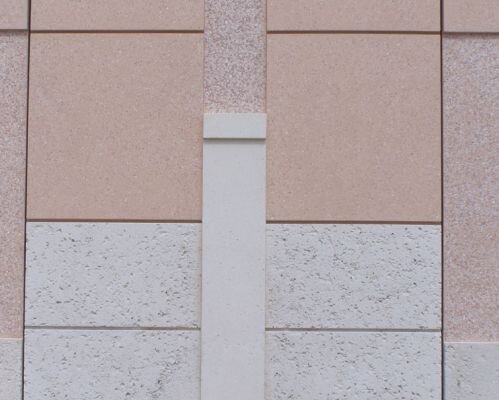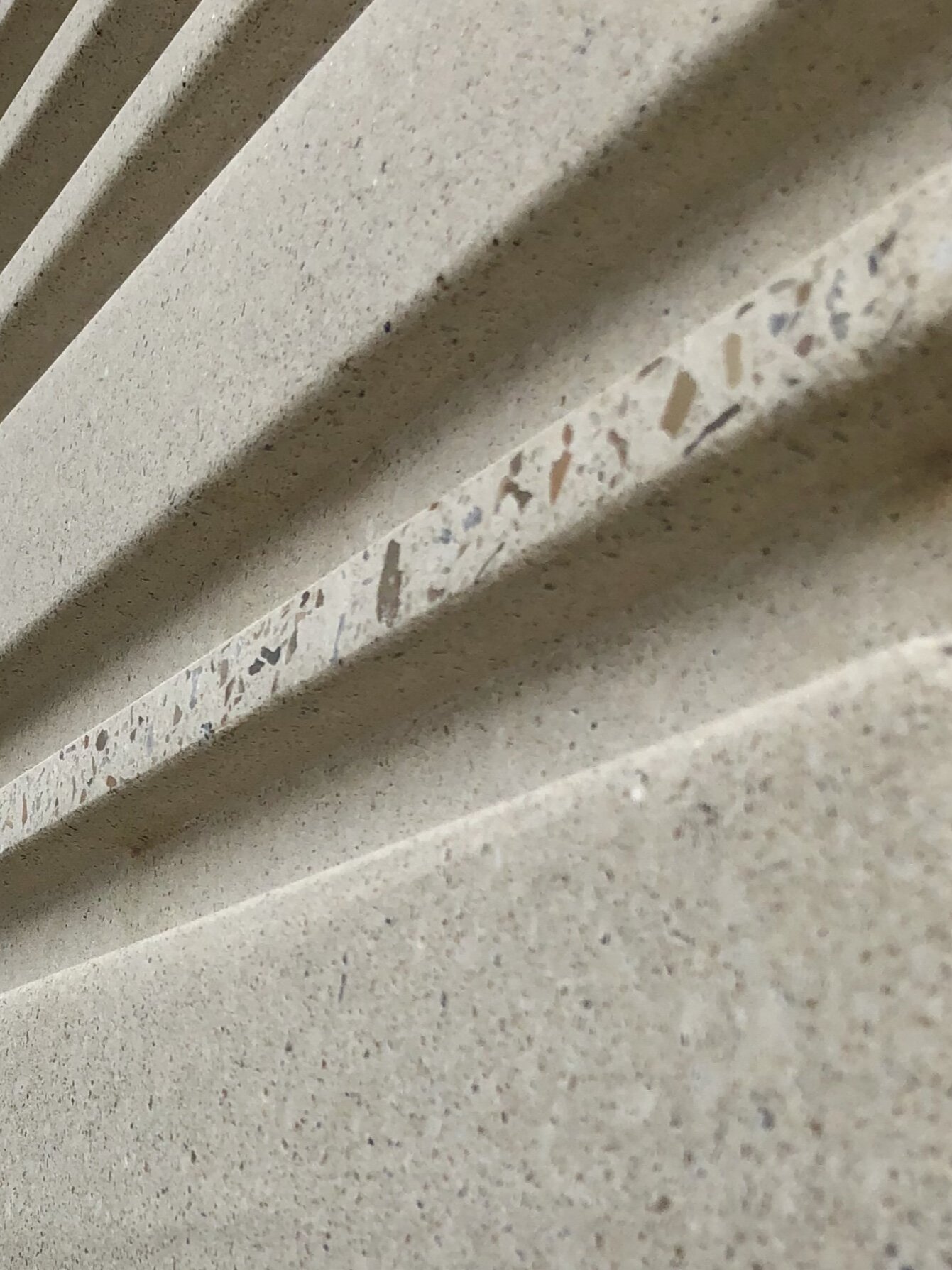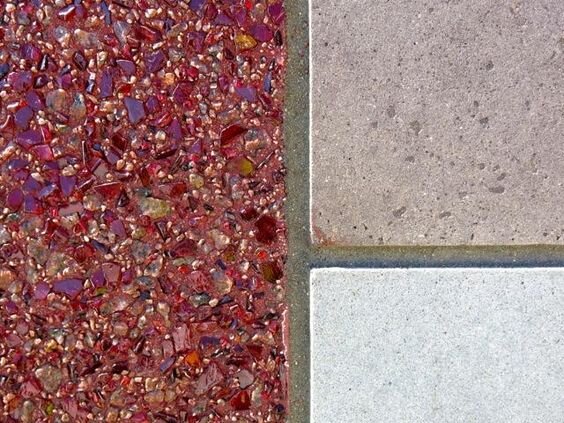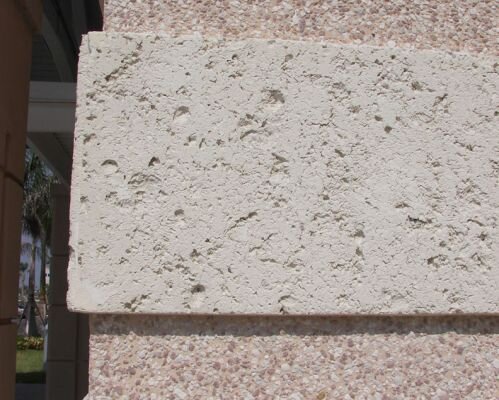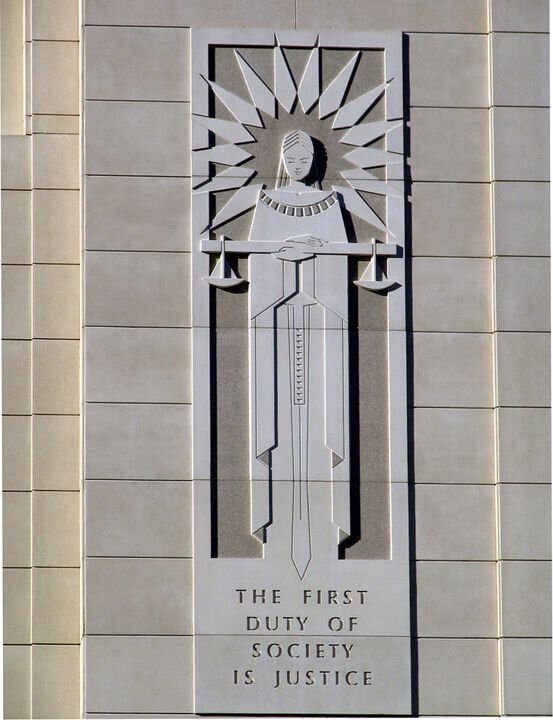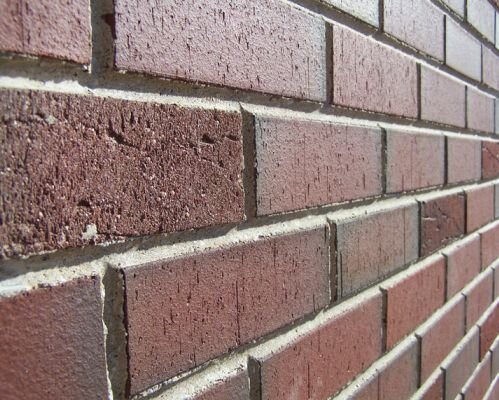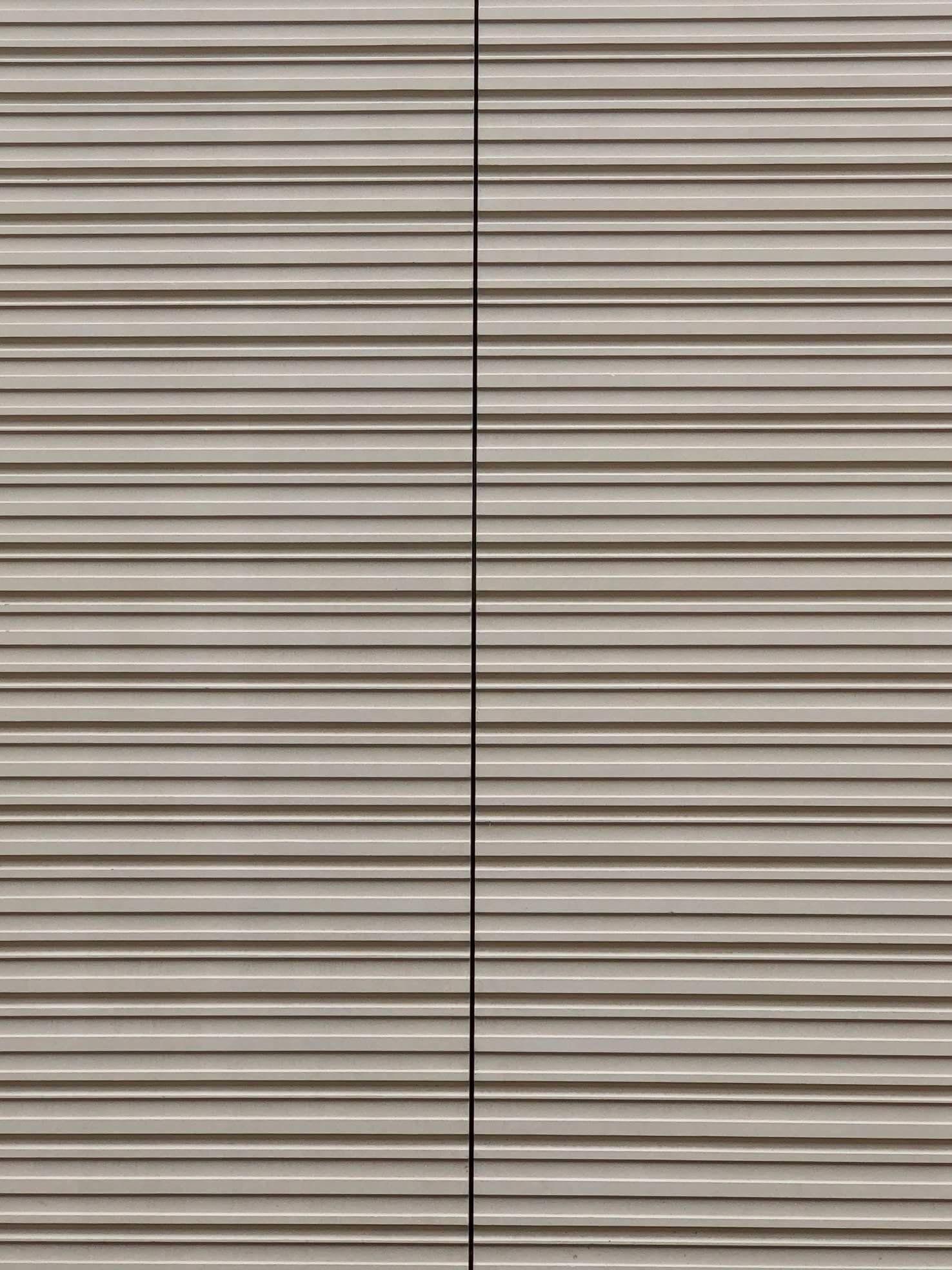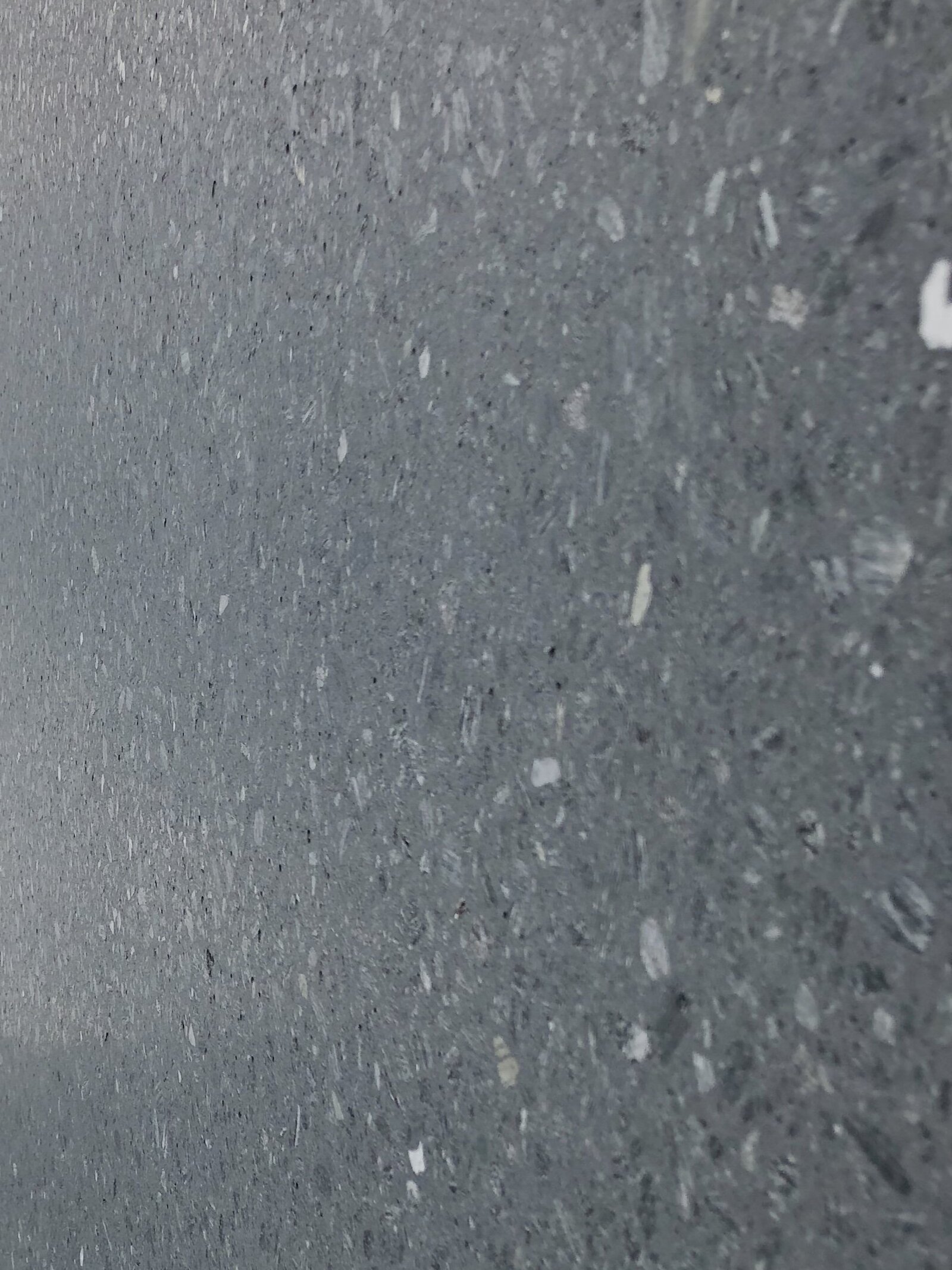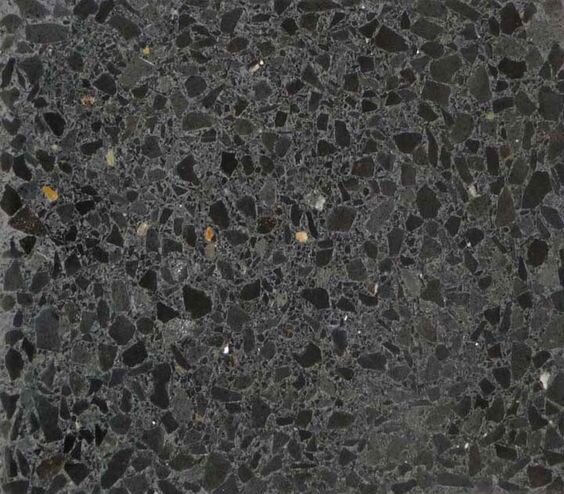Precast and the Design Assist Process
When a design team engages a precaster for "design assist," they typically intend to procure precast concrete early in the design process to take advantage of the precaster's knowledge and recommendations to choose the most effective techniques, sizes, finishes, etc. and maximize efficiency across the project.
The term "design assist" currently refers to a recent tendency toward early integration of the design/build process. This method was initially applied when the design team, contractors, and owner worked together early in the design phase to include environmental goals in project planning. It was immediately determined that the advantage of this method is its capacity to adapt to clients' increasing needs for projects to be delivered more rapidly, sustainably, and uniformly, with less danger of price increase. To meet these requirements, the building crew must work closely and quickly together.
How the Process Works
When a design team engages a precaster for "design assist," they typically intend to procure precast concrete early in the design process to take advantage of the precaster's knowledge and recommendations to choose the most effective techniques, sizes, finishes, etc. and maximize efficiency across the project.
Design assist is the contemporary trend toward adopting the design/build delivery technique. This is shown to improve processes often by utilizing the collective experience of all participants. It can inspire better solutions for achieving expedited timelines, lowering risk, and preventing price increases.
Preliminary Design
To start the design assist process, the project team creates a preliminary plan, including drawings of the building's sections, elevations, typical wall sections, floor plans, special loading information, occupied areas, and outline requirements. The precast can then use those materials to create a comprehensive estimate with a guaranteed scope and timeline.
Design Phase
After multiple design sessions, these ideas are examined and modified to determine the most effective design that satisfies the owner's requirements while producing precast concrete components. The precaster’s project management team members, such as their project manager or engineer, often attend the meetings. When required, a precast can also offer estimation services, suggestions, and counsel for precast design, fabrication of the components, erection methods and schedules, and transporting.
Finalization
The contract amount and timeline are modified to reflect any deviations from the initial scope of work after design development is complete. To guarantee that the project budget and construction schedule are preserved, these modifications occur early in the process.
The precaster in this process becomes a more active participant in counseling the architect and engineer of record rather than taking their place. The building's structural layout and conceptual design remain under the purview of the architect and engineer. The precaster uses their unique experience and efficiency to affordably achieve these objectives. This might entail value-engineering some structure elements or just creating the proper timetable.
Consider taking PCI's free eLearning course, Efficient Design Assist, to learn more about how the design assist process works with precast. This online course will discuss the importance of adding precasters to the team earlier in the construction process, discuss the best way to use precasters to assist the project delivery team, and cover how evolving design roles are shaping the future of the concrete industry.
Benefits of Design Assist Process
Precasters provide in-depth knowledge that enables technical breakthroughs and scheduling improvements that speed up design development, improve aesthetics, and keep costs under control from the initial concept to project completion. Each part may be constructed as inexpensively as feasible using the precast concrete's built-in performance qualities. The precaster will be able to offer design and detailed recommendations to guarantee that the highest level of effectiveness is attained at the lowest possible cost of erection. The end product should be an operationally effective and aesthetically beautiful enclosure that meets or exceeds the project's requirements.
A predetermined schedule and a defined cost for the precast work are two of the method's main advantages. Based on the general information provided by the owner's design team, precasters will use their experience and expertise to create a guaranteed design assist proposal that can include a detailed scope description, preliminary drawings, a Gantt chart schedule, erection logistics, or other specific project information.
The following are additional advantages of the design-assist method:
Saving time and money by developing concrete mixes and finishes beforehand rather than waiting until after the bid and award process to approve samples
The budget is continually monitored so that new pricing information can be supplied
Value-engineering ideas that use precast concrete's benefits are suggested as soon as possible to cut costs
Providing guidance on-site logistics and constructability challenges
Taking part in the creation of a detailed project schedule
Shortened lead times thanks to an early agreement among all parties
Architectural precasters can review PCI’s free Designer Notebook on Architectural Precasters’ Design Assist Role and how it can benefit all sized projects here.
Key Takeaways
The process of design assist can help save a lot of time, money, and revisions. It helps to guarantee that the owner receives the project without unexpected delays or overruns, on schedule, and within budget.
Workforce Development: Employee Lifecycle
The employee lifecycle is an organizational technique that illustrates how employees interact with the firm they work for. Knowing what each stage of your employees' experience should bring during their time at your precast company will help enhance their overall experience and keep more employees on longer.
The employee lifecycle is an organizational technique that illustrates how employees interact with the firm they work for. The whole period that an employee spends working for a firm is divided into seven stages by the employee lifecycle:
Attraction
Recruitment
Onboarding
Development
Retention
Separation
Advocacy
Knowing what each stage of your employees' experience should bring during their time at your precast company will help enhance their overall experience and keep more employees on longer.
Attraction
Attraction is the initial phase of the employee lifecycle. This is a reference to a company's recruitment strategy. A business must comprehend its strategy for luring top people. A firm has to define goals for what it wants to be renowned for and how it will differentiate itself from competitors before it can comprehend how to recruit talent. Business attractiveness factors include brand recognition, company culture, and perks and benefits.
This phase of the model is crucial since prospects will choose here whether or not they find you appealing as a possible employer. You won't be likely to draw the ideal people to assist your business expansion if you don't make a solid first impression.
Focusing on developing your brand and reputation is the greatest strategy to enhance this early stage of the employee life cycle model. Your brand will gain an outstanding reputation if you have a culture that values employee growth and innovation.
What Precast Manufacturers Can Do to Improve Attraction
The younger generation of precast laborers and designers will ultimately be looking for companies that are innovative in their fields. Showing off new technologies or processes to potential employees will show them that you are always at the forefront of industry practices.
To gain their attention, it is also essential to be where your potential employees are. Make sure you have a solid online presence on various social media platforms to share your business and what an employee can expect to be doing. You don't need to follow TikTok trends, but showing how unique the precast manufacturing process is and the results can get the right people interested in a job with your company.
Recruitment
Recruitment is the next phase of the employee life cycle. This is crucial regardless of whether you handle the hiring process manually or using software. This is so that they will always have a positive impression of your business based on how you treat them during this process, even if they don't get the job.
A precast company must have a recruiting plan after attracting individuals to its business. They must consider the type of individuals they wish to hire and the process for doing so.
A potential employee will become more acquainted with your business culture and the position's requirements throughout the recruiting phase. When seeking competent individuals, weigh the advantages of employing your network and current workers vs external agencies.
What Precast Manufacturers Can Do to Improve Recruitment
Precasters can help future employees during recruitment by making the process as streamlined and straightforward as possible. Make sure to have your job listings on your website and places like Indeed or LinkedIn where people might be looking for them. And make sure to take down those listings too, once you hire someone.
Social media can also be a great place to show off your business and help with recruiting. Consider doing short videos of your current employees speaking highly about the company and then mentioning where people can apply for the same job.
Onboarding
Onboarding and orientation are the following phases in the life cycle of a new employee once you have hired them. The primary goal of this phase is to assist new workers in comprehending and assimilating your organizational culture.
Ensure you provide enough details at this phase so that recruits know your organization's objectives, philosophies, and values. Additionally, you want them to be aware of their role in developing your company.
The new employee needs to know when their first day is, what to expect from that day and week, what sort of training they can expect, what their responsibilities will be, and what documentation has to be finished before they start working. Surprisingly, 60% of workers decide whether or not to stay with a firm after their first day. Doing this correctly may give new hires the impression that they can leave their stamp on the company.
What Precast Manufacturers Can Do to Improve Onboarding
Precasters can help their employees with the onboarding process by having new employees complete as much of the paperwork everyone hates before they even step foot into the plant. That way, the first day can be about the job, not the forms.
Letting your precast employees get hands on the first day in a safe and controlled manner can be a great way to show them why working for you is the right choice. Show off the projects you have completed, the precast components you are working on, and teach them how their efforts in the plant translate into the larger picture.
Retention
The goal of retention is to keep workers on board with the business. The results of your effort from the four earlier phases are seen at this point. A precast plant is more likely to keep employees if it performs an excellent job of attracting, hiring, onboarding, and developing talent.
Attrition among employees is a regular aspect of managing a company. However, you should take action to keep your top achievers. It's critical to comprehend at this point what stops employees from quitting. That entails paying attention to their feedback, giving them the tools to enhance how they complete their tasks, keeping them interested, and making sure they feel at ease with their daily routine.
The easiest method to do this is through a rewards and recognition program. Building a loving and encouraging culture is also vital to promote employee engagement and happiness.
What Precast Manufacturers Can Do to Improve Retention
Keeping employees is much easier than higher new ones for your precast plant. Not all employees will want to move through the ranks, but you should have options available for those willing to put in the hard work with a clear path they can follow to achieve that with your company.
Also, regular feedback is important from your workers. Think about giving them an outlet, anonymously if needed, to provide constructive feedback and ensure your management is willing to listen and make changes when legitimate claims are made. An employee who offers a suggestion that is then acted upon will feel much more connected to an organization than one who is ignored.
Development
While some employees are content to work in the same position for a long time, others are driven to advance their careers within the company.
You want to assist your staff in this skill development phase so they can do their jobs more effectively. You also should show your employees that they have a defined career path, whatever that looks like, so they won’t be pushed to look for work at another company to achieve their career goals.
Employees desire challenges and the chance to advance in their professions. Employee career development should be outlined in detail by the employer. While an employee's self-motivation may contribute to some development, a business should provide possibilities for growth.
Discuss goals regularly with personnel.
Evaluate the knowledge and abilities of each employee.
Frequently offer possibilities for training.
Encourage external learning and honor staff who pursue independent study.
Get your supervisors to work one-on-one with staff to assist them in prioritizing the areas that need improvement.
Encourage the team members to take ownership of their growth.
What Precast Manufacturers Can Do to Improve Development
Consider offering classes through your company or offering to pay employees that take classes that will directly improve the job skills they are currently doing. PCI has a wide variety of free eLearning courses and several other online options your employees can look at.
For employees looking to move up in your organization, offer them a pathway and provide mentors within your organization to help guide them through the process. Also, think about training managers to notice employees who have potential and point that potential out to them.
Separation
Employees should, ideally, depart your organization with good feelings and desires for their coworkers. Take the time to comprehend the employee's reasons for leaving and solicit honest input on what you can do to improve the workplace if you want to boost your future outcomes. Regardless of the reason for leaving, it's critical to make this last stage enjoyable. Apart from anything else, it affects your other staff members when a team member quits.
What Precast Manufacturers Can Do to Improve Separation
No one likes to lose an employee, but precasters who have employees leaving should consider, just like any other company, how to make that experience positive. The standard offboarding procedures should be completed, but afterward, consider having a get-together to celebrate your employee leaving for better things and showcase all they accomplished with your organization.
It is also a good idea to ask your employee for feedback and ask if you can get a written or video testimonial of their experience working with your company before leaving. These can be used later for helping with recruiting new employees.
Advocacy
Even after leaving a firm, employees can still be helpful ambassadors for the employer brand. Employees are far more likely to suggest a company to friends or acquaintances seeking a job if they have had a positive experience there, especially when it comes time to depart. The brand might be harmed, and future hiring attempts could be less successful if, on the other side, an employee's leave experience was less than ideal.
Even if they are no longer your workers, try to consider them brand evangelists. If it suits your culture, consider sending them holiday cards or emails, inviting them to more company events, or getting in touch with them when you're looking for new positions to see if they know anybody.
What Precast Manufacturers Can Do to Improve Advocacy
Consider taking advantage of those employees that left your precast company but loved working there. When you have job openings, send them an email or LinkedIn message with the job posting to send to others. You can even consider offering an incentive if you hire someone they suggest.
If you are attending job fairs, consider inviting previous employees who can tell future ones how much they enjoyed working for you and what they can expect.
Precast and Infrastructure
The United States' intricate network of vital infrastructure sectors aims to ensure that our country runs smoothly and its residents are safe. Precast concrete building products address a demand in the ongoing endeavor to safeguard these important infrastructure sites.
The United States' intricate network of vital infrastructure sectors aims to ensure that our country runs smoothly and its residents are safe. The assets, systems, and networks are governed by Presidential Policy Directive 21 (PPD-21) and protect the national public health and safety and the national economic security. Significant national resources are devoted to advancing and improving these sectors on an ongoing basis.
What is Classified as Key Infrastructure?
PPD-21 encompasses 16 key infrastructure sectors that have been identified. These industries are so vital that the destruction or incapacitating of even a small portion of them would have a crippling impact on overall national security. Here are the sixteen sectors:
The chemical industry is in charge of turning raw materials into more than 70,000 goods that are necessary for survival.
The commercial facilities sector is in charge of many locations that gather big crowds of people, including office buildings, malls, and accommodations.
The communications sector is in charge of delivering interconnected services like wireless and satellite, as well as the providers who collaborate to guarantee interoperability.
The critical manufacturing sector is responsible for the components vital to economic growth and national security.
The dam sector is in charge of hydroelectric power generation, flood control, industrial waste management, and many other vital water retention and control services.
To meet the needs of the US military, the Defense Industrial Base Sector is in charge of the research, development, production, delivery, and maintenance of military weapons systems, subsystems, and components.
The emergency services sector is responsible for the highly skilled individuals who respond to incidents nationwide.
The energy sector is accountable for performing an "enabling role" to provide a reliable energy supply to all other vital infrastructure.
The financial services sector is in charge of hundreds of depositories, investment product suppliers, and companies that provide credit and financing.
The manufacturing, processing, and storage of food supplies are done primarily by privately owned businesses in the food and agricultural sector.
The government facilities sector is in charge of various structures that the federal government either owns or leases for public and private functions.
The healthcare and public health sectors safeguard the economy against terrorism, pandemics, and natural disasters.
The information technology sector ensures the security of technologically related systems and services used by enterprises, governments, academic institutions, and citizens.
The nuclear reactors, materials & waste sector oversees 20,000 licensed users of radioactive sources, research/test reactors, fuel cycle facilities, and operating and retired reactors.
The Transportation Systems Sector ensures that goods and people are transported safely, quickly, and securely across the country's transportation networks.
The Water & Wastewater Systems Sector provides clean drinking water and treats sewage for the entire country.
Why Highway and Bridge Infrastructure Works with Precast
Due to the country's vast number of bridges, roads, and highways, many of which will need to be updated or repaired, roads and bridges will continue to be the primary use for precast concrete in infrastructure construction.
Our country's infrastructure has traditionally relied heavily on precast concrete. DOTs have utilized it for various purposes, including walls, bridges, barriers, and more, due to its robustness, dependability, quality, and ease of installation.
Other precast parts stand out because of inherent colors, unusual shapes, insets, and finishes that give them a second role. Some precast elements do their purpose diligently but go mostly unnoticed as they blend into roadside environments.
These elements provide much more than solid infrastructure. Highway sound walls have embedded regional animals or distinctive patterns, giving them life. Other states have made architectural choices like natural stone, wood grain, or brick that complement the neighborhood's aesthetics. Precast is ready to take on the challenge of being not only a superior structural construction material but also an aesthetically versatile one.
Precast concrete offers the appropriate appearance, quick installation, and long service life. Precast concrete may frequently be installed more quickly than competing materials. Retaining walls and MSE in a variety of forms are also offered by precast manufacturers around the nation.
Despite their higher cost, precast concrete components will increasingly be used in new and repair road and bridge construction. For instance:
Because of their lightweight and capacity to endure stresses brought on by the weight of other bridge components and strong traffic loads, prestressed bridge components, tees, and slabs are utilized on bridges.
Because they are strong and have extended lifespans, precast concrete sound and traffic barriers are frequently employed.
Precast concrete may span anything from gullies to gorges and can reflect the architectural character of a community while also protecting the environment. Precast can offer an aesthetically pleasing, long-lasting design, whether the product is a short-span bridge or a full solution that can cross a significant river.
Benefits of Precast for Infrastructure Projects
The US has an open society, making it susceptible to events that endanger safety and security. Aside from unpredictable and uncontrollable natural disasters like floods, tornadoes, earthquakes, and hurricanes, the US also faces several covert adversaries who aim to harm our way of life through physical attacks on buildings and transportation systems and cyberattacks on the financial and technology sectors. Precast concrete building products address a demand in the ongoing endeavor to safeguard these national treasures.
Blast Resistance
Precast concrete is incredibly resilient to the concussive effects of blasts and can be built to withstand gradual collapse. Precast is a great option for data centers, military and governmental buildings, and other locations holding critical equipment and information because of this property.
Fire resistance
Precast concrete buildings do not burn and contain fires, giving first responders a chance to evacuate residents and stop the spread of the fire. Concrete is fireproof, which helps to control fires and reduces total damage to the structure in the event of a fire.
Storm resistance
Precast concrete's intrinsic strength is unaffected by strong winds, rising water, or vibrating ground. Precast concrete "weathers the storm" better than any other building material and is used in FEMA-approved projects due to its durability.
Sustainability
Precast concrete has replaced other building materials as one that supports the "one and done" attitude as we have come to appreciate the necessity to construct durable structures with ecologically friendly features. Precast construction will last for decades, as opposed to other building materials that need continual maintenance and replacement.
Reduced maintenance
Because precast concrete is stronger and more durable than conventional building materials, it needs less "service after the sale." Both interior and exterior precast applications are top performers in all climates and geographical regions due to their exceptional mold/mildew resistance and great longevity.
Resource-Efficient
90% of concrete's composition comprises its primary element, water, coupled with sand, stone, or gravel. Surprisingly, each ingredient's sourcing and assembly use very little energy. Cement, which makes up 10% of concrete, is also the component that releases all of the CO2 into the atmosphere.
Makes for Energy-Efficient Buildings
Concrete makes it possible to restore our infrastructure efficiently, thanks to LEED certification for construction. Insulation and little air infiltration are frequently incorporated into concrete construction techniques to increase energy efficiency.
Additionally, recycled materials can be used in concrete, reducing both the carbon footprint and the number of materials that would otherwise wind up in a landfill. Industry preferences for more environmentally friendly concrete are fly ash and slag.
Has a Long Service Life and Quick Build Time
Concrete is incredibly resilient to the elements and long-lasting, making it the ideal material for rebuilding our infrastructure. Additionally, new and improved concretes are lighter and stronger than traditional precast. Compared to other building materials like steel, wood, and asphalt, concrete is also the undisputed champ in terms of sustainability and cost-effectiveness.
The selected concrete reinforcement, however, requires more consideration. Choosing the appropriate rebar can make all the difference in corrosion. Concrete structures that use stainless-clad steel reinforcing bars have demonstrated lifespans of more than 100 years.
Precast concrete projects can be constructed quickly in emergencies, and precast concrete factories have completely changed the game for places that need to be extensively rebuilt quickly.
Precast Bridges
For bridges and other commercial projects, precast or prestressed concrete is preferred. This is a result of the fact that this kind of building material has shown to be reliable, affordable, and low maintenance.
For bridges, as well as other commercial projects, precast and prestressed precast concrete have earned a place of distinction as a preferred building material. The reliability, affordability, and low maintenance alone add immeasurable value to this product.
History of Precast Bridges in the United States
Photo via Structurae (Walnut Lane Bridge (1950), Philadelphia, Pennsylvania (HAER, PA,51-PHILA,715-5))
The major precast bridge breakthrough occurred in the 1950’s and 1960’s as a result of the massive increase in road traffic and the construction of new interstates. Fast and affordable solutions were required to prevent the disruption of the moving traffic. The creation of bigger and more slender precast units was significantly aided by the entrance of long-line prestressing techniques into precasting factories which proved to be particularly useful for long spans and heavy weights for bridges.
First Prestressed Bridge
The Walnut Lane Bridge in Philadelphia, completed in late 1950, is regarded as the nation's first significant prestressed concrete bridge. The bridge was created by Belgian engineer Gustave Magnel and his pupil Charles Zollman. The post-tensioned concrete beams were all cast in a single piece at the bridge site. A cable was run end to end through a planned aperture after the concrete had dried and set. The cable was given tension by a jacking device, which anchored it in place. In 1989–1990, the initial beams and superstructure were changed.
Although pretensioned precast bridge beams were manufactured before 1948, that year saw the debut of the first producers who began advertising and creating precast bridge beam ranges. Tennessee is where the first precast bridge in the USA was built.
How Precast Bridges Are Built
All types of bridges use precast to build both the superstructure and the substructure including vehicular, pedestrian, railroad, pipeline, and dock bridges. Flat slabs, neighboring box beams, pretensioned beams, as well as spliced and curved girders are examples of superstructures. Precast end bents, piles, and pile bent caps, along with precast columns, are examples of substructures.
What is a prestressed concrete bridge?
Prestressing is a method of applying stresses of a preset magnitude through tendons (often steel cables) to generate compressive stress to increase tensile strength. Prestressing is frequently used in bridge components, as well as other precast products.
Pretensioning involves pouring concrete over already-tensioned wires and letting it set up to solidify and secure the cables in place. The ends of the tensioned cables are cut and the tension is transferred into the beam or slab once the concrete has hardened and cured.
Pretensioning, which is more difficult than post-tensioning, is the current standard method for creating prestressed bridge beams. In order to retain the steel cables, referred to as "strands," in a highly tensioned state while the concrete is being poured around them in molds, pretensioning calls for the creation of sizable "casting beds."
Concrete is post-tensioned, which involves adding compression after curing. The tendons are tensioned and wedged to maintain the tension before being supplied through ducts cast into the finished concrete product. The aperture is then grouted after this.
What type of concrete is commonly used for bridges?
Concrete beams, spandrels, columns, single and double tees, wall panels, segmental bridge units, bulb-tee girders, I-beam girders, flat slabs, and hollow-core slabs are typical examples of structures that use precast concrete.
Precast Bridge Components
Precast concrete is a superior option for bridges and other traffic related construction such as noise barriers, median barriers, and pavement systems due to its structural and aesthetic versatility, resilience, speed of construction, high level of quality and durability.
Precast Piles
Precast piles are one of the main components of precast bridges commonly used in areas such as Mississippi, Alabama, and Louisiana. Prefabricated, highly durable prestressed concrete columns known as piles serve as the foundation or support for buildings and bridges. Concrete piles are reliable workhorses and outlast wood or steel piles in maritime and coastal conditions.
Biloxi Bay Bridge
After the original bridge was destroyed by Hurricane Katrina, the new Biloxi Bay Bridge was designed using various precast components including precast piles that were designed not only to withstand a Category 5 hurricane but also vessel collision loads.
Precast Pavement
Precast pavement and precast bridge decks add an additional benefit and the greatest option for a high-volume, continuously used roadway. PCI-certified precast concrete replacement slabs are a lasting investment for transportation clients faced with deciding how best to spend limited infrastructure funds.
Lake Pontchartrain Causeway
The Lake Pontchartrain Causeway is a prime example of how precast can be used on a highly traveled roadway. The bridge is the main mode of travel over Lake Pontchartrain and sees over 40,000 vehicles every day. When safety became a liability, a total precast solution was chosen to bring the bridge up to modern-day design standards.
Precast NEXT Beams
Precast bridge designers are finding new ways to bring innovation to the industry. Through the creation of the NEXT Beam, the demand for a more effective bridge beam design entered the transportation world and is gradually transforming how bridges are maintained or replaced with an emphasis on cost-effectiveness, longevity, and design flexibility.
Cribbs Mill Creek Drainage Bridge
Contech, formerly known as Forterra, was involved with providing NEXT beams for the Cribbs Mill Creek Drainage bridge in Alabama. It was the first project in Alabama to use NEXT Tee Beams. The NEXT beams provided a clean line profile that did not require joint lines and removed possible future joint maintenance.
Advantages of Precast Concrete Bridges
There are numerous benefits to using precast concrete for bridges. Not only is precast produced in a quality-controlled environment, PCI certified producers adhere to a strict quality control program to ensure their precast components are of the highest quality.
Precast concrete bridge components also have uniformity because they are manufactured using the same molds and techniques.This means when they arrive at the job site, they are ready to be erected without additional work or forming.
As an offsite construction option, precast is manufactured in plants away from the job site. This means they are shipped precisely when they are needed and do not require laydown space on tight job sites. The offsite manufacturing proves to be the perfect solution for environmentally sensitive areas on major highways or rural bridge locations.
Why is precast concrete cheaper?
When it comes to bridges precast concrete is a more durable and economical solution than other construction materials. Precast concrete lasts longer, requires less future maintenance, and is produced in quality-controlled environments which ensures the quality of the components. DOTs around the US look to precast to build their infrastructure so it lasts for decades with little upkeep.
How long does precast concrete last?
Precast concrete can be designed to perform for 100 years or more with minimal maintenance. This means that bridges designed with high-quality precast components such as those from PCI-certified producers continue to give value long after the initial cost of installation.
Accelerated Bridge Construction
Bridge repair and replacement procedures continue to improve thanks to close cooperation between the Transportation Research Board, the FHWA, the American Association of State Highway and Transportation Officials, and academic/industry partners along with the development of strategies such as accelerated bridge construction.
Key Takewaways
Precast, prestressed concrete has taken its place as the material of choice for bridge building and other transportation-related projects. Precast continues to be a “go-to” option for government agencies and their engineers across the nation today. This development is the result of precast producer dedication to creating and developing cutting-edge products and technologies with the goal of improving the efficiency of bridges and other transportation-related structures.
Precast FEMA Storm Shelters
As extreme weather events become increasingly common, storm shelters are becoming more crucial across the US. In particular, hailstorms, tornadoes, and dramatic temperature swings have increased in the southern part of the US over the past few years.
As extreme weather events become increasingly common, storm shelters are becoming more crucial across the US. In particular, hailstorms, tornadoes, and dramatic temperature swings have increased in the southern part of the US over the past few years. The upcoming decades are expected to have a similar perspective. Communities are looking into long-term, affordable options like precast concrete building to protect inhabitants.
A safe room is a fortified building created especially to meet FEMA requirements and offer nearly complete protection from extreme wind occurrences, such as tornadoes and hurricanes.
The occupants of a safe room constructed in accordance with FEMA guidelines will have a very high possibility of being protected from harm or death, according to our present understanding of tornadoes and hurricanes. This level of safety is referred to as "near-absolute protection."
Precast concrete satisfies every requirement for safe rooms in FEMA P-361. For storm shelters, it can be applied at the most fundamental design level. FEMA has stricter regulations than other building codes and mandates near-absolute protection for occupants during extreme weather events from wind and debris. The FEMA-selected wind speeds emphasize safety and call for the capacity to resist winds exceeding 250 mph. These exacting requirements are met by precast concrete.
Precast concrete gives value to a building in addition to protecting its residents. Precast provides structures a number of additional advantages, including:
strengthened structural integrity
protection from strong winds
shorter construction periods
advantages of thermal mass
Precast buildings sometimes function as multipurpose constructions and are built with gyms or auditoriums in mind. When individuals are compelled to utilize the shelter due to an extreme weather occurrence, these additional design features offer comfort and ease. The environment for inhabitants is improved by thick, insulated precast walls that absorb sound and FEMA-rated windows that let in natural light.
Advantages of Precast Storm Shelters
Structural Integrity
In order for a structure to be considered structurally sound, it must be stronger than the highest possible service stress or storm loading. A precast concrete safe room's structural integrity enables it to withstand service loads independently, without relying on surrounding support materials or soils. The building is deemed suitable to carry out its function if the planned strength of a precast concrete safe room exceeds the anticipated maximum applied stresses by an acceptable factor of safety and it complies with the extra FEMA 320 and FEMA 361 requirements.
Wind Protection
Tornadoes, hurricanes, and other such catastrophes rarely produce constant high winds. The pressure and stresses on the various components of a structure increase due to the constant varying and changing of wind speeds and directions. Wind forces operating on both sides (inside and outside) of a safe room structure will also have an impact.
Access and Entry
When choosing a secure room, access points are a crucial aspect to take into account. Easy accessibility, resistance to missile-type forces, and adequate attachment to a structural backing material are all characteristics that can be easily addressed in a precast concrete design for an access point (a door or window). Doors that comply with ICC-500, Section 306.3.1; windows that comply with ICC-500, Section 306.3.2; and all other openings that comply with ICC-500, Section 306.4 are valid entry and exit points for authorized precast concrete safe rooms that can survive tornado events.
Transportation and Installtion
Safe rooms made of precast concrete can be produced well in advance of installation on site. There is no need to wait for cast-in-place concrete buildings to set or cure because they are fully cured before being delivered to the site. Precast concrete safe rooms are readily available, competitively priced, and ready for use as soon as they are delivered. When compared to other materials, these precast advantages can save a project valuable days, weeks, or even months.
Thermal Mass
In the construction business, the term "thermal mass" refers to a material's natural capacity to absorb heat energy. The daily temperature changes in the building's internal spaces can be reduced by using a wall material with a high thermal mass. Because precast concrete has a high thermal mass, it requires a significant amount of heat energy to adjust its temperature. Because safe rooms are intended to house numerous people for an extended period of time, and because the ventilation and temperature within are crucial to ensuring occupant health and safety, the capacity of precast to moderate temperature changes is significant.
Ventilation
The 2006 IBC and IRC codes1 are applicable if the local jurisdiction has not issued a building code; ventilation in approved precast concrete safe rooms complies with the building codes or regulations adopted by the local jurisdiction. Precast concrete safe rooms have ventilation through either the ceiling or the floor. Any ventilation apertures must be shielded with a shield or cowl that passes missile impact testing. When specifying a precast concrete safe room, it is conveniently satisfied the requirement for mechanical ventilation if the safe room is intended for occupancy of more than 50 persons. During the precast manufacturing process, ventilation apertures are simply created and placed to precise requirements.
FAQs about Precast and FEMA Storm Shelters
What is the best material for a storm shelter?
One of the most typical materials found in shelters is concrete. It is quite heavy and loses some of its mobility in strong winds. There aren't many anchorages, extra fixtures, or installation needed. It is more affordable than other materials like steel, works well for many different storm shelter designs, and has a track record of withstanding severe weather.
How thick should a concrete storm shelter be?
According to FEMA, foundations must be at least 3.5 inches thick and in many cases winds will create loads that need greater thicknesses. More information and technical details from FEMA can be found here.
What types of materials are storm shelters made from?
Storm shelters can be made from a variety of materials including wood, steel, and concrete. Some shelters make use of more than one of these materials that work together to provide protection to the occupants inside.
Robert J Curry Public Safety Center
The Robert J Curry Public Safety Center is built to FEMA 361 design and construction guidance for community shelters and can withstand the stringent 200 mph wind requirements. It is also used as a first responder shelter to house more than 275 personnel for pre and post-disaster functions. The project consisted of 563 pieces of over 68,000 SF of exterior cladding most of which are 8” thick architectural precast concrete walls.
Precast Resiliency Resources
PCI recently highlighted precast and its ability to perform well in storms in their Ascent magazine. Read some of the articles below.
Precast Enclosure Systems
Precast, as an enclosure system, provides a distinct advantage over other building materials. Precast walls act as both the structural support for a structure and the component that provides the building’s insulation.
Precast, as an enclosure system, provides a distinct advantage over other building materials. Precast walls act as both the structural support for a structure and the component that provides the building’s insulation. By choosing precast, designers and clients are choosing a product that lasts a life-time and provides the support and protection needed to keep residents safe.
Types of Precast Walls
The versatility of precast walls ranges from providing architectural cladding for the exterior of a structure to a total precast system that provides insulation and structural support for the overall building. The following graphic depicts different types of precast walls.
Solid Walls
Solid walls are manufactured completely of concrete with insulation added to the interior finishing wall system. These types of walls can have any type of finish added to the back.
Sandwich Walls
Sandwich walls encompass the normal characteristics of a standard precast concrete wall with the added benefit of insulation which provides energy performance and moisture protection. More information about sandwich walls can be found in the State of the Art Sandwich Wall Panel technical document.
Thin-Shell and GFRC
Thin-shell wall panels are made from a thin outer-wythe of concrete and are connected to the backup structural system which usually consists of steel or concrete. Glass fiber-reinforced concrete (GFRC) is a type of thin-shell system which includes concrete that contains alkali-resistant glass fibers.
Lite Walls
Lite walls are used on precast structures and involve shear walls with a void that provides openness and a feeling of security.
Depending on the needs of a client, one or more of these types of walls can be used to create the enclosure of the structure.
PCI’s Designer’s Notebook: Envelope Tolerances for Architectural Precast discusses the tolerances and clearances required for joining different building materials.
PCI also offers a collection of technical documents regarding Building Enclosure Design here for professionals looking for more guidance in designing building enclosures with precast.
Benefits
Like other precast components, precast walls provide valuable benefits for a building’s enclosure. Some of the benefits include:
Moisture Resistance: Precast wall systems are a barrier or face-sealed systems. They are superior to rainscreen systems because they do not require a space where water can collect and cause further issues. There are several supporting technical documents on the Building Enclosure Design web page under Air and Moisture Management.
Thermal Mass: Precast concrete buildings save energy in various types of climates due to their ability to absorb and store heat and react very slowly to changes in outside temperature. This is further discussed in PCI’s Thermal Mass technical document.
Quick Erection: Precast building enclosures can be erected in a few days or weeks which greatly reduces the overall project construction schedule.
Eliminates Threats: The speed of installation eliminates the need for fireproofing, termite treatments, and additional insulation.
Versatility: Precast walls can be designed to match a specific color or texture and help buildings blend into their surroundings in urban environments or match existing nearby structures.
When used as a building enclosure, precast/prestressed concrete provides substantial benefits to both the owners and occupants of the structure. The versatility of concrete allows for designs of all sizes, shapes, and colors which meets the unique characteristics of each project.
Precast and Carbon Emissions
At current rates, global carbon emissions are 36 billion tons annually and rising. With a new focus on reducing carbon emissions to help counteract climate change, the precast industry has begun focusing on improving their processes and educating design professionals on the sustainability that concrete can bring in the long-term.
At current rates, global carbon emissions are 36 billion tons annually and rising. With a new focus on reducing carbon emissions to help counteract climate change, the precast industry has begun focusing on improving their processes and educating design professionals on the sustainability that concrete can bring in the long-term.
How much carbon does precast contribute to global emissions?
Cement accounts for 3% of global emissions because of its use of clinker and limestone which emits carbon during production. This percentage also includes the actual energy inputs needed to produce the cement itself.
What is the comparison to timber?
Precast is often compared to timber when designers are considering sustainable materials to use in their structures. Deforestation is responsible for 2.2% of global emissions (which is the difference between carbon from deforestation and the positive offset of replanting), with 8-10% of timber in the construction industry coming from deforestation. Most timber comes from forest degradation which means trees are selected to be cut down leaving other trees intact.
The actual carbon emissions of the timber industry is not fully analyzed because there are no international standards for tracking it. Wood harvested from one country can be shipped to another with the carbon emissions impacted only being counted in one country or not counted at all.
For example, each year 80,000 hectares of trees in North Carolina are cut down to produce wood pellets that are then burnt in power plants in the UK, as well as for paper and timber. The state does not count the resulting emissions. This makes it nearly impossible to determine the actual global emissions from the timber industry and compare it to precast.
Although it is true that if managed correctly for long-term carbon storage timber is an amazing carbon storage device, currently timber is harvested well before trees can fully store their potential for carbon making it less efficient in comparison to precast.
What ways can precast help with its emissions?
New technologies to capture or reduce carbon
Since there are no other construction materials like concrete, professionals have been trying to implement new technologies to help reduce its carbon footprint. There are a variety of methods being tested including direct-air capture (DAR) which is a machine that acts as an artificial tree collecting CO2 particles out of the air passed through it. There are also ideas such as capturing CO2 from smokestacks and putting that carbon into cement products to replace certain high carbon materials in concrete like limestone with other less carbon producing compounds.
New greener concrete formulas
Concrete professionals are currently working on other types of cement to help counteract the carbon emissions of current products. One of these newer innovations is called PLC or Portland-Limestone Cement. This concrete provides the same durability and resilience, but has a reduced carbon footprint of 10%. It can be used for basically any structure with no modifications to mix design or placing procedures.
Reduces waste over the long term
At its core, precast is inherently resistant to storms and provides protection from wind, surge, and flying debris. This storm resistance has been confirmed through numerous impact tests. But aside from its resistance, precast structures are able to recover quickly after storms. Because the precast is mold/mildew resistant, it is able to not only withstand flooding, but recover without long lasting damage. This resiliency translates into structures that last longer and withstand much more than timber structure which have to be replace more frequently and end up causing more materials to be sent to the landfill.
The Takeaway
Improvements in both the timber and precast industries could mean larger impacts on reducing global carbon emissions for the construction industry as a whole. Working together they could significantly cut their emissions together and provide designers solutions that meet their clients long-term carbon and sustainability needs.
Energy Efficiency and Precast Concrete
Through its numerous design benefits, precast can be the go to solution for clients looking to meet sustainability goals and reduce their impact on the environment.
Environmental discussions are becoming more and more important and precast has become apart of those discussions with its ability to act as an energy efficient construction solution. Through its numerous design benefits, precast can be the go to solution for clients looking to meet sustainability goals and reduce their impact on the environment.
Because concrete has a higher density, it has the capacity to absorb and store larger quantities of heat than other materials such as wood. Concrete reacts very slowly to changes in temperature which reduces heating and cooling loads. During the day, the concrete slowly heats up using the heat from the outside environment and then slowly releases this heat during the night using natural ventilation. The result is flatter swings in temperature and energy savings of up to 25%. Thermal mass is an important element to precast’s ability to provide more energy efficient to a structure.
Using precast concrete structural wall panels with architectural finishes reduces the redundancy that comes with traditional cavity wall systems. Precast concrete is an all-in-one construction material that provides a moisture barrier, fire resistance, noise cancellation, and insulation wall without the need for additional materials. It also is able to maximize its thermal properties by delaying heating/cooling requirements which can reduce strain on HVAC equipment over the life of the structure.
When a building is erected using precast concrete, the building is enclosed which limits moisture and mold during construction. Also, precast concrete is an efficient construction material from its construction stage throughout the operation of the building. Hard finished surfaces are easy to maintain and precast is the perfect material for an organized, time and labor saving, cost-effective building system.
The resources below discuss more about the efficiency of precast concrete
New Orleans BioInnovation Center
The BioInnovation Center was the first laboratory building in Louisiana to achieve LEED Gold certification as a result of various sustainable and efficiency features.
FIU Student Academic Center
The design team of the precast FIU Student Academic Center was able to balance nature light with temperature, limiting the native heat and keeping temperatures cool.
Precast Plant Safety
Regardless of the design or product being produced, all precast building materials get their start in a manufacturing facility at the hands of highly skilled producers. The “day-in-day-out” production process is shrouded in a blanket of safety protocols intended to minimize or eliminate worker injury.
Beautiful precast structures wow and amaze us. The versatility and unique adaptability of precast concrete allows for high impact designs, as well as straightforward brute strength building components. Regardless of the design or product being produced, all precast building materials get their start in a manufacturing facility at the hands of highly skilled producers. The “day-in-day-out” production process is shrouded in a blanket of safety protocols intended to minimize or eliminate worker injury.
SAFETY IS EVERYONE'S RESPONSIBILITY
*Management’s Role: Supervisors and managers bear the enormous responsibility of ensuring that crews are safe at all times. Oftentimes, a company Safety Manager will head the training, both initial and on-going” for safety issues in precast plants. They will oversee that all mandates are being followed and provide company-specific training. Many companies kick-off their day with a “toolbox talk” which serves as a brief meeting to highlight areas of concerns and provide daily reminders about safety rules.
*Employee’s Role: Employees often “police” themselves and remind fellow workers when they observe safety protocols not being followed. Some companies provide different colored hardhats to new employees so they are easy to spot and special attention can be paid to them as they become acclimated to the plant environment. It is the employees responsibility to familiarize themselves with the employee handbook and the safety plans for the plant.
AREAS OF CONCERN IN A PRECAST PLANT
The Plant
Is PPE being worn? Gloves, steel toed boots, ear protection, specially fitted sandblasting suits etc. are all items designed to protect workers from chemical exposure and silica exposure as they perform their duties.
Is the machinery being properly maintained? Machine maintenance not only ensures a breakdown doesn’t inhibit the production process but it also ensures that workers are not injured while machines are in use. Items such as back-up alarms as well as using “lock-out-tag-out” systems are in place to provide an additional layer of safety at the plant.
Is the plant neat and orderly? Slips and falls are easily avoided when the plant is free from spilled liquids and items left laying around.
The Yard
Do yard employees have situational awareness? As cranes and trucks move about the storage yard, workers are at increased risk of injury if they are not keenly aware of their surroundings.
Are lifts being used at proper capacity? Exceeding capacity of machines, whether in the plant or in the yard, can result in dangerous situations. It is the responsibility of both management and workers to ensure that unsafe practices are not happening with the goal of saving time.
The Erection Crew
Is the crew on the jobsite practicing safety? Because precast producers are often subcontractors for a general contractor, many times a safety plan will be requested by the general contractor addressing how the precast products will be handled and erected safelyon the jobsite.
The Trucking
Is the movement of the product from plant to jobsite safe? From loading of the trucks to tie down of products, safety begins before the precast components leave the yard. Once loaded, products must be trucked on public roadways and unloaded safely on the site. Sometimes special permits are required for the trucking of extra large components.
Safety is everyone’s concern. It is imperative that time and energy are devoted to processes and protocols that keep workers safe and injury free. The Optimum Safety Group offers beneficial safety guidelines to PCI members and can be found at www.pci.org. OSHA also has a wealth of information regarding silica and other pertinent topics.
Precast Automation
Labor shortages are wreaking havoc across the nation. The precast manufacturing industry, along with other industries, is actively taking steps to address the issue while consistently maintaining a reputation for high quality. A solution has been found with the adoption of automation.
Labor shortages are wreaking havoc across the nation. The precast manufacturing industry, along with other industries, is actively taking steps to address the issue while consistently maintaining a reputation for high quality. A solution has been found with the adoption of automation. Automation in precast plants ensures a steady and uninterrupted flow of product will be delivered in an efficient and controlled manner.
Precast automation boosts several benefits including offering high quality products, improved efficiency, increased safety, and reduced manpower. These benefits offer improved work conditions for employees and keep products rolling out the door in a timely manner.
Greater Consistency/High Quality
Human error is impossible to avoid. People make mistakes and those mistakes can be anything from something small with little impact to something large scale mistakes that affects budgets and schedules. Automated machines and computer programs don’t make mistakes which equates into less budget busting errors.
Increased Efficiency/Less Time Consuming
Automated machines and processes can be tweaked to achieve the highest efficiency possible and then that efficiency can be maintained day in and day out. Precast automation allows for accelerated production schedules thus maximizing the manufacturing potential of the plant.
Safer for Workers
Manufacturing precast can be a difficult job even for the most experienced worker. Health risks associated with silica dust, noise pollution, and muscle strains/sprains are risks that precasters work to avoid on a daily basis. Automation helps cut down on risks posed to workers and improves the overall safety of the environment.
Reduced Labor Intensity for Workers
Automated precast processes means less workers are needed to manufacture precast products. Processes that traditionally required 10 workers could potentially only take 3 using automation. The reduction in workforce provides a cost saving to precast manufacturers that is passed on through more competitive market prices for precast products. It is important to note that although automation reduces the number of overall workers, there will always be need for personnel to program and run the machines. Precast automation is an opportunity for precasters to employ a higher caliber of laborer at a higher wages who uses more brain power and less brute force.
The automated production of precast concrete is a riveting process to witness. Vollert Precast recorded the automated production of double walls and floor slabs showing how automation can be used in conjunction with workers to create precast components.
As with any new innovation, automation has both positives and negatives to consider. The downside of precast automation includes the significant upfront costs associated with either building a new production plant dedicated for the automation or upgrading an existing facility. However, the long-term benefit of precast automation lies in money saved through a reduced workforce and accelerated production potential.
Precast Double Tees
As one of the most widely used precast components in North America, the double tee is a versatile and cost-effective precast product that can be used for a variety of projects. But what is the double tee and what makes this precast component so popular?
As one of the most widely used precast components in North America, the double tee is a versatile and cost-effective precast product that can be used for a variety of projects. But what is the double tee and what makes this precast component so popular?
What is a precast double tee?
Double tee precast components tend to be used for larger structures such as parking garages or large buildings, but they can be used for other projects including shorter bridges and highway structures. The design allows them to offer wide uninterrupted spans while supporting higher loads.
The shape of the double tee resembles its name and looks like two capital “T”s put side by side. Double tees are prestressed prior to casting with prestressing tendons which consist of high tensile strength cables. They can be used as both horizontal and vertical load-bearing members.
What are the benefits of Double Tees?
Precast double tees benefit from the same attributes as other precast components including resistance to extreme weather, minimal required maintenance, and cost-effectiveness in comparison to other construction materials. In addition, double tees also have their own specific benefit which is the ability to provide long, clear spans while still supporting high loads.
Precast double tees can be designed for spans reaching up to 100 feet. This is an important benefit for structures such as bridges which span over wide areas or buildings created with open-concept designs.
NPCA tested the strength of a precast double tee beam against multiple 4,400 lb barriers placed on top. What happened? Watch the video to find out!
Camp Shelby Training Center
The Camp Shelby Operational Readiness Training Center is an all precast facility whose construction included the use of 163 double tees. Precast was used to create the facility to meet occupant load requirements.
The Park at South Market
The Park at South Market is an excellent example of the most common use of double tee precast beams. The project included 286 12’ double tee beams integral to the construction of parking garage located in New Orleans, LA.
Residential Precast
Residential projects can make use of precast to meet their high-performance goals. From single-family homes to large-scale condos, precast is the right choice for constructing residential facilities.
Residential projects use of precast to meet high-performance goals. From single-family homes to large-scale condos, precast is the right choice for constructing residential facilities.
Credit: Jack Jennings & Sons
Single and Multi-Family
Precast is definitely not the first construction material people think of when it comes to single and multi-family homes, but the benefits it provides to homeowners makes it a valuable option. Precast offers several security benefits to homeowners including resistance to extreme weather events and inherent fire and storm protection. Precast is also cost-effective over time because of its energy efficiency and lower maintenance costs. Homeowners can also take advantage of the aesthetic versatility of precast to design a home that matches their specific design taste. Accelerated building schedules allow precast to be erected faster than homes designed with traditional building materials . Multi-family homes benefit from the noise-canceling qualities precast offers. In the end, precast is a great alternative to stick-built construction for homeowners who are looking for a more resilient, durable solution that saves money over the life of the home.
Credit: Kloudvue Koncepts
Student Housing
Student housing facilities face many demands during their lifetimes. Decades of students moving in and out translates into a lot of wear and tear on a structure. Durable construction materials that meet the challenges of student populations are key, along with safe and comfortable environments that allow for flexibility. Precast meets these demands because it is an inherently durable, resilient material that provides protection from storms, fires, and other threats. Precast offers the reduction in noise pollution that can occur in crowded residential spaces. Lower life cycle maintenance costs provides value to the university in the long run. Additionally, schools are often challenged with accelerated schedules to complete construction projects while students are away and precast is able to meet these accelerated schedules without issue.
Commercial Hotels and Condos
Hotels and condos take a lot of abuse from guests and demand durable options for construction. Precast provides building owners with numerous aesthetic and structural options to meet their project goals for beautiful and functional high residency structures. Precast offers sound insulation, resiliency, and protection of guests from extreme events such as weather and fires. Precast hotels and condos work well in all geographic areas and serve residents with the comfort and safety they expect.
Credit: Scott Shigley
Senior Living
Senior Living centers are designed with the priority of creating comfortable environments for occupants in a budget-friendly manner. Precast is able to help senior living facilities optimize their buildings with aesthetic and structural versatility. High-performance precast is great for both low and high-rise structures and is a durable, resilient material that can be constructed quickly without sacrificing quality.
Case Study
The One South First mixed-use building projects from Gate Precast showcases just how versatile precast can be for residential projects. Using precast, designers reused a 22-story commercial structure and transformed it into a contemporary residential building. Precast was used for the facade to pay homage to the original use of the building as a Domino Sugar factory.
Ultra-High Performance Concrete
Ultra-High Performance Concrete or UHPC is a type of concrete that has steadily grown in popularity due to its increased durability and strength over traditional concrete. The US Army Corps of Engineers first used UHPC in the 1980’s, but it wasn’t until 2000 that it became commercially available in the US.
Ultra-High Performance Concrete or UHPC is a type of concrete that has steadily grown in popularity due to its increased durability and strength over traditional concrete. The US Army Corps of Engineers first used UHPC in the 1980’s, but it wasn’t until 2000 that it became commercially available in the US. Since then, more professionals, including PCI precast producers, have been using UHPC in projects ranging from bridges to buildings.
What is UHPC?
UHPC is characterized by several things including ultra-high compressive strength, high pre-cracking, and post-cracking tensile strength, and enhanced durability due to high density and discontinuous port structure. While there are numerous advantages that UHPC brings to projects that will be covered later in this article, the overall benefit of UHPC is the elimination of reinforcing steel and the material’s ability to self-compact.
UHPC is made by combining portland cement, supplementary cementitious materials, reactive powers, limestone/quartz, fine sand, water reducers, and water. Fibers are included in the mix to help provide the strength and durability that UHPC is known for. Fibers can range from brass-coated thin wire to glass fibers mainly used for architectural applications.
UHPC can come in a prepackaged mixture or as local material-based mixtures. Prepackaged UHPC mixtures have several benefits including more selective raw materials, assured batching consistency, and reduced batching times. UHPC made from local materials has slightly different benefits such as lower cost and the ability to be tailored to project needs, but it requires local expertise and verification testing.
PCI has a pre-recorded UHPC webinar free to view which gives a more in-depth description of UHPC at the link below.
What are the benefits?
UHPC’s durability has been extensively tested and it has been found to respond exceedingly well to extreme conditions that standard concrete struggles with. UHPC’s testing has been completed in three main areas and includes:
Freeze/thaw resistance: Testing has shown UHPC retained 100% of its material properties after 600 thaw/freeze cycles.
Chloride permeability: Testing has shown UHPC has extremely low chloride migration, less than 10% of normal concrete.
Abrasion resistance: Testing has shown UHPC has 2x the abrasion resistance of normal concrete.
Aside from its durability benefits, UHPC brings a host of other advantages to projects. UHPC can be produced using local materials which reduce its cost. Overall, UHPC is also a lighter material per foot which results in less expensive shipping and spans can be designed for longer lengths. UHPC isn’t restricted to structural precast components; it can be designed for architectural cladding as well. Best of all, because of UHPC’s durability, it has about double the lifespan of standard concrete which makes it a better choice for the environment in the long run.
Cor-Tuf, a PCI Associate member of FPCA, has created and tested their own UHPC mixture and provides precast components to the Florida region. Below is a video they created that shows multiple tests of their UHPC piling and demonstrates just how durable and strong UHPC components can be.
PCI Foundation Studios
One of the missions of the PCI Foundation is to help support and fund precast studios at universities across the country. Studios are important tools to help future engineers and architects learn what precast is and the benefits it can bring to projects they will design in the future.
One of the missions of the PCI Foundation is to help support and fund precast studios at universities across the country. Studios are important tools to help future engineers and architects learn what precast is and the benefits it can bring to projects they will design in the future.
About the PCI Foundation
The PCI Foundation has been providing curriculum development grants to universities of architecture, engineering, and construction management for 20 years. This funding gives professors the ability to partner with local precast producers, engineers, and architects to create unique precast content. These partnerships foster relationships between the precast industry, university professors and future industry leaders.
PCI Studios
Since 2007, the PCI Foundation began sponsoring learning studios at universities with majors in engineering, construction management, bridges, and architecture. The PCI Foundation assists with funding programs for several years before universities are asked to begin supporting the projects on their own. To date, research has shown a high ROI on program continuation after PCI has passed the program off to universities.
So far more than 4,000 students have participated in a PCI Studio at 31 universities.
How to Apply for a PCI Studio
For schools interested in starting a PCI Studio, there is a simple process to follow to apply for a grant. After reviewing the Proposal Guidelines and Getting Started guidelines to fully understand the application requirements, schools can reach out to the PCI Foundation to discuss the next steps and begin their proposal process. An advisory committee is put in place for applications to help them stay on track during the process. Professors work with a precast partner during the writing of their proposal.
PCI Gulf South Studios
PCI Gulf South has partnered with several studios in the Gulf South region to help provide precast knowledge to future engineers and architects.
Under the direction of Charles Jones, RA at Tulane School of Architecture, future designers enrolled in the university use the studio to tackle environmental issues using precast concrete products.
As a recipient of a newly awarded PCI Foundation studio grant, Assistant Professor Alexis Gregory has begun to immerse her students in the vast opportunities precast offers to the design community.
In August of 2020, the University of Alabama was awarded a studio grant for a 4-year studio focused on precast and prestressed concrete education.
McNeese State University was recently awarded a PCI Foundation Studio. The studio program, which is composed of industry partners and academia, will focus on precast products and their use in the petrochemical industry.
Precast Concrete and Thermal Mass
Because concrete has a higher density, it has the capacity to absorb and store larger quantities of heat than other materials such as wood and gives structures increased thermal mass.
What is Thermal Mass?
Thermal mass is described as the inherent property of a material to absorb heat. A material with a high thermal mass is able to moderate temperatures inside a facility throughout the day.
Because concrete has a higher density, it has the capacity to absorb and store larger quantities of heat than other materials such as wood. Concrete reacts very slowly to changes in temperature which reduces heating and cooling loads. During the day, the concrete slowly heats up using the heat from the outside environment and then slowly releases this heat during the night using natural ventilation. The result is flatter swings in temperature and energy savings of up to 25%.
Benefits of Precast
Energy Saving Benefits
Thermal mass is affected by temperature both inside, from things such as indoor lighting or heat transferring through windows, and outside, from the climate. When a building’s envelope is constructed from precast with the interior concrete exposed and not covered by insulation or drywall, the concrete is able to absorb the heat from inside and reduce cooling costs.
Reduce Urban Heat-Island Effect with Lighter Colors
Lighter-colored concrete will have a higher amount of solar radiation reflected off its surface and reduce the amount of urban heat-island effect. Depending on the needs of the facility, lower amounts of reflection might actually be needed in order to absorb more heat from the outside of the structure. Designs can include different colored surfaces for walls facing different directions to achieve the best energy conserving arrangement.
Reduced Uncontrolled Air Infiltration
An important part of thermal mass is the air infiltration of a building, as well as its energy-saving benefits. The connection between panels is important for reducing uncontrolled air infiltration and helps minimize heating and cooling costs. Larger precast panels have minimal joints further reducing this issue.
Looking for more information about thermal mass? Check out some of our free resources below!
Case Studies
Statue of Liberty Museum
New York, NY
High Concrete Group
The high thermal mass of the concrete panels helps maintain interior temperatures and minimizes the effects of outdoor temperature swings. Additionally, special connection details minimize thermal bridging between interior and exterior building components.
New Orleans BioInnovation Center
New Orleans, LA
Jackson Precast
Slenderwall precast provides a consistent and controlled building envelope through the use of closed-cell foam insulation which acts as a vapor barrier and contributes to the air/water tightness of the panels.
Schools Tackle Storm Resistance
Because of its resiliency, precast is often used in FEMA shelters and when used in schools, can create a dual purpose for the facility by enabling it to act as a storm shelter for the community.
Precast concrete is an inherently resilient building material and has the proven ability to provide protection against extreme weather events such as tornadoes, hurricanes and earthquakes. Because of its resiliency, precast is often used in FEMA shelters and when used in schools, can create a dual purpose for the facility by enabling it to act as a storm shelter for the community. Many districts apply for FEMA funding grants to assist with the cost of new construction and the new construction must adhere to the types of requirements that precast concrete naturally addresses (i.e. IBC wind rating to 250 mph).
This cutaway BIM drawing shows a gymnasium with a total-precast concrete structural system designed as a FEMA safe room for the Marquand Zion School District in Mar-quand, Mo. The 1,400-square-foot, two-story addition on the side of the 8,000-square foot gym qualifies as part of the safe room but contains restrooms below and mechanical systems above that feed into the gym. Photo: Toth and Associates
Using Precast For School Storm Shelters
Through the use of precast, designers are able to develop hardened areas and safe zones within schools that students and faculty members can use when extreme weather events occur. Total precast solutions are the best solution for resistance to tornadoes, hurricanes, and extreme thunderstorms. The idea of safe rooms tends to be overlooked when designing school facilities because of budget constraints along with the assumption that these structures will have a “bunker” appearance. However, there have been a number of successfully constructed facilities, such as gyms, classrooms, and performing art centers, that meet the needs of safe rooms while avoiding the traditional look of a bunker.
Tornadoes
In the past, most people have associated the Midwest with Tornado Alley. However, in recent years Tornado Alley has shifted further east and encompasses a number of other states in the danger zone including the Gulf South region. These “Dixie Alley” tornados are more dangerous because they occur in greater populated areas and tend to be more costly in property damage. Precast can act as a solution to this problem by helping schools in these danger prone areas develop wind resistant facilities that can withstand tornados. Precast has been impact tested and proven to provide resistance to flying debris associated with tornados.
Twisters occur around the world, but the United States is a major hotspot, with about a thousand tornadoes every year. Research has shown that Dixie Alley is now a more frequent destination of these violent storms. Photo: Federal Emergency Management Agency.
Source: The Weather Channel
Hurricanes
Hurricanes tend to be more complex than tornadoes and therefore require specific design specifications to withstand the variety of forces they can produce. Hurricanes produce not only high winds, and occasionally tornados, but also high impact waves and tremendous amounts of rain and surge. Structures have to be built to withstand these events and protect the people inside. The Gulf South region has dealt with several major hurricanes over the last decade.
Several school facilities within the region, such as St. Vincent’s in Long Beach, MS, decided to adopt a precast solution after losing their facilities to hurricanes.
Precast provides protection from high winds, storm surge, and scour. In the aftermath of a hurricane, precast also prevents mold from developing on its surface and fire resistance making it easier to rebuild quicker and cheaper once the storm has passed.
The Robert J Curry Public Safety Center in Gulfport, MS replaced the original Gulfport Police Station destroyed by Hurricane Katrina. The new facility has an architectural precast exterior wall system that meets FEMA 361 design and construction guidelines and can withstand 200 MPH winds.
After being destroyed by Hurricane Katrina, St. Thomas and St. Paul Elementary Schools decided to merge and rebuild using a total precast system solution. Precast was chosen because of its resiliency.
Unfortunately, extreme weather has become the new normal is many areas of the country. Schools are turning to building materials that provide the durability and resiliency necessary to protect students and the community. Precast building materials protect during the storm and expedite recovery after the storm by creating structures that survive intact.
Precast Educational Athletic Facilities
Athletic facilities are unique structures in the fact that they need to house thousands of people for major events sometimes multiple times a week while lasting through years of continued use and being exposed to the elements.
Athletic facilities are unique structures in the fact that they need to house thousands of people for major events sometimes multiple times a week while lasting through years of continued use and being exposed to the elements. To achieve this level of capability, athletic facilities need to be built to last using high-quality materials that require little maintenance. Precast is the perfect solution for these facilities to help them stand a lifetime and be prominent structures on school campuses.
Little Maintenance
Precast inherently requires little maintenance once constructed. Structures made from precast can last decades before any kind of maintenance is needed. There are also innovative techniques such as the use of self-cleaning admixtures which keep precast looking new without any additional effort.
High Durability
Precast athletic facilities have several advantages regarding durability. Outside facilities such as stadiums and bleachers will be able to withstand extreme weather events such as snow, rain, high heat, seismic events, and hurricanes without sacrificing their structural stability. Precast also helps these facilities hold up against constant wear and tear from students and event attendees.
Other athletic facilities such as indoor gyms can not only be used for athletic events but also double as storm shelters when built with precast. They can serve as FEMA centers in areas where extreme weather is common and can be used to protect both students and the surrounding community.
Cost-Benefit
Schools often have very tight budgets and are looking to get the most out of their construction projects. Although precast can be slightly more expensive in the short term, in the long term the benefits greatly outweigh the initial cost. Schools will save money in construction costs, maintenance, and the reduced need for renovations. Because precast structures last decades, schools won’t need to consider replacing these structures for many years. Also, precast can help schools be more energy-efficient helping them cut costs on heating and cooling.
Safety
Schools across the country put a lot of value on the safety they can bring to their students. Precast athletic facilities can help schools provide the level of safety they are looking for. Precast is inherently fire resistant and can be built to help stop the spread of fires within the facilities should they happen. Designers can also work with precast to help create safe spaces and restricted lines of sight in the event of unauthorized personnel on campus.
Case Studies
Producers in the PCI Gulf South regions have worked with both K-12 and high educational clients to create athletic facilities that met their unique needs.
LSU Basketball Practice Facility
This project consisted of a 58,960 gross square foot addition to the existing Division 1 University Basketball Arena. Precast was used to create a building form that acted as a natural extension to the futuristic form of the original arena and was used alongside a self-cleaning photocatalytic titanium dioxide admixture, to resist the impact of the adverse climate.
Dudy Noble Field
Built in the 1980s, MSU’s Dudy Noble Field was in need of modern renovations. 99 precast panels covering almost 8,000 SF with architectural precast concrete were used with an acid-etched finish to mimic white limestone.
LSU Tiger Stadium
21 pylons to act as gateways and ticket collection areas for the LSU Tiger Stadium. Precast helped complete the project on a tight project schedule, on a constricted site, with major architectural exposure.
Precast School Renovations and Additions
Precast provides a building solution that K-12 schools can utilize to create modern, low maintenance renovations to existing buildings. Precast structures have an adaptable and versatile design capability that can be blended with existing structures while providing safe and durable spaces for students.
Educational buildings are in constant use and experience heavier activity levels than most buildings. According to available data, the average age of the 99,000 public schools in the United States is 42 years old. When a school building reaches 20 to 30 years in age, frequent repairs to equipment occur. Buildings that reach 30-40 years, begin to require replacement of equipment and structural elements such as roofs. School buildings in the 40 to 60 year range start to rapidly deteriorate and many school buildings are abandoned after 60 years of age.
Based on these statistics, it can be assumed that there are a large number of K-12 school facilities in the United States that are in desperate need of repairs. Not only are these facilities in need of renovations/repair/replacement, but older schools tend to serve a greater number of children in poverty. This correlation is rooted in budget constraints often faced in low-income areas of the country. The 21st Century School Fund projected that schools in 2018 would need to spend on average $196 million to update facilities simply to accommodate new students, a number which has increased over the last few years.
How Can Precast Help
Where does precast fit into this equation and how can precast assist with renovations/repairs/replacements that will serve the student population with minimal maintenance for decades to come?
Precast provides a building solution that K-12 schools can utilize to create modern, low maintenance renovations to existing buildings. Precast structures have an adaptable and versatile design capability that can be blended with existing structures while providing safe and durable spaces for students.
Accelerated Schedules
A major benefit of using precast is the ability of precasters to meet tight project schedules. Oftentimes, schools cannot close during the school year for renovations and are forced to complete construction during breaks or over the summer months. Precast components are manufactured offsite and arrive ready to be erected. Depending on the number of precast components, it can take as little as a few days/weeks to get everything in place, greatly accelerating construction schedules. An additional benefit to the offsite construction of precast is that fewer people and equipment are required on-site.
Match the look of existing materials/styles
Precast is a versatile building product that offers an array of textures, colors, and styles. Precast has the ability to be matched to existing materials such as stone or brick through the use of brick inlays or specialized formliners. Precasters are able to use forms to make unique designs such as mascots or text. With the versatility of precast, schools have the option to design renovations that match existing architecture or create unique looking additions.
Fit in tight urban or project sites
As previously mentioned, precast components are manufactured offsite in a quality controlled environment by skilled and experienced producers. The offsite process equates to less equipment and personnel on the job site and no delays in production due to inclement weather. This also means that tight project sites, like those often found in urban areas, are no challenge for precast. The precast erection schedule is highly choreographed so components arrive at the site ready to be lifted into place which minimizes truck traffic and the need for a large staging area at the site.
Ascent Summer 2018
PCI published an entire Ascent issue on the role precast plays in K-12 schools and how cutting edge designs meet the schedule and budget needs of schools around the country.
Case Studies
The decision was made in 2011 to preserve the mid-century building with thoughtful additions conveying the significance of its architectural and social merits. The additions utilized precast concrete that saved time and money and resolved a number of design issues.
Summit Country Day School Addition
The solution for the new construction of the school’s addition was precast executed under an IPD-methodology. The existing architecture from 1888 was matched to perfection by a tightly integrated team, erecting a five-story structure and envelope in 21 days.
As school districts continue to explore solutions for aging structures that meet student demands while fitting budget and time constraints, precast is the answer. The versatility, durability, and efficiency of precast “checks off all the boxes” while providing an aesthetically pleasing product that will stand for decades to come.
Architectural Precast & Historic Schools
Historic schools face challenges when they need to expand or adapt. This is where the versatility of precast is the perfect solution!
Architectural Precast Mimics Historic Schools
The US is home to tens of thousands of historic buildings of which thousands are school facilities. One of the oldest school facilities currently in use in the United States is the Boston Latin School is Boston Massachusetts which was created in 1635. Needless to say, schools take pride in their heritage and strive to preserve the historic structures on campus. Historic schools face challenges when they need to expand or adapt. This is where the versatility of precast is the perfect solution!
The Needs of Historical Schools
Historic schools often face challenges of “modernizing” while maintaining the historic appearance. Improving energy usage, creating flexible and adaptable learning spaces and addressing health /safety for occupants is the same for a historic school as it is for a contemporary designed school but with the added need to match the historic aesthetic of the existing structures.
Retaining Historic Individuality
Historic schools showcase the rich history of the campus and typically employ architecture from various time periods. Names, dates and images are often incorporated into the long-standing structures as monuments to the past. The infinite options available with the use of precast concrete allows designers to pick up where history left off, thus maintaining a seamless appearance.
Creating Buildings that Look Exactly Like Original Buildings
Sometimes older buildings have to be replaced. In some cases, schools desire to replicate the original structure with a new one. Precast versatility allows for close duplication of existing structures to include such things as matching color, texture and even brick.
Creating Additions to Blend with Existing Architecture
As school demand grows larger, facilities are forced to grow larger to meet that demand. Historic schools can work with designers to create additions that blend into the existing architecture. The unique challenge for designers is the availability of materials to match existing structures.
How can precast help?
Through the use of pigments, aggregates, acid etching, brick inlays, specialized formliners and more, precast concrete building components are manufactured by highly skilled precast producers to bring a design to life. Whether the design calls for a brand new look or the replication of an existing design, precast has it covered.
Gate Precast provided precast to achieve the look of 100-year old limestone for the St. George Catholic Church, making the new precast components indistinguishable from the original limestone.
Formliners are reusable forms that can recreate patterns such as brick, stone, etc on concrete panels. Read more about the creative freedom of formliners on our blog, Formliners and the Versatility of Precast Concrete.
Below are just a few examples of some of the possibilities!
Case Studies
The Charleston Progressive Academy was built in 1955 and the school wanted to retain its historic identity while providing a modern facility for the students. The decision was made to use precast to help preserve the mid-century building with thoughtful additions.
LSU was looking for an addition to their 1970s basketball arena that would preserve the iconic structure which is located in tight project site. Precast was used to build the new addition in a fraction of the space.
Historical schools face a variety of issues when tackling a new construction project. Adding precast building materials into the design aids in achieving the desired end result while also providing a resilient, versatile, and efficient structure that will stand for years to come.
Schools and Precast in Urban Environments
School facilities constructed with precast require less maintenance in the long term and are smart investments. Boasting numerous advantages, precast limits the need for ongoing facilities spending and allows districts to direct more funds toward the education of the student.
The United States contains over 13,000 school districts that are classified as “urban”. Those districts serve over 49 million students. These school districts have a variety of facilities that require routine maintenance in order to perform efficiently for the student body. As funding and societal issues become more pressing, maintaining a functioning facility is sometimes pushed aside.
School facilities constructed with precast require less maintenance in the long term and are smart investments. Boasting numerous advantages, precast limits the need for ongoing facilities spending and allows districts to direct more funds toward the education of the student.
How does precast help?
Offsite construction
Precast is produced in offsite facilities, thus freeing up space on the job site. Designed and produced in quality controlled environments, schools can rest assured the precast components used to build their facilities have undergone a rigorous inspection.
Quick erection
Because precast is produced offsite, it arrives at the job site ready to be put into place. Precasters understand that schools often require accelerated schedules in order to complete work in between the times when students are present. Precast can be erected in as quickly as a few days depending on the size and complexity of the structure and can be erected in all types of weather.
Blend into surrounding environment
Precast can be designed to match existing or surrounding structures. With a variety of textures, colors, and designs available, precast producers design precast components that help schools blend into urban surroundings or with other buildings on campus.
Less disruption for surround structures
With less personnel and equipment needed to erect precast on site, precast provides less disruptions for surrounding structures and neighbors. Precast is erected quickly meaning loud equipment won’t be on site for long periods of time, thus reducing noise pollution to the surrounding community.
Unique Designs
Schools that wish to add a unique look to their facilities can count on precast to deliver. Precast can be designed in all shapes, sizes, and colors and design details such as text or images can be incorporated into the components through the use of specialized formliners.
Provides Support to Security Efforts
Precast schools provide the advantage of passive security. Through long site lines and secure access points, an impenetrable building that is easier to monitor is achieved.
Along with these specific benefits, precast also offers other benefits to schools such as fire, blast, and storm resistance, as well as mold resistance and superior resiliency and sustainability.
Take a look at some of our additional blogs that illustrate why precast is the right choice for schools.
Case Studies
Charleston Progressive Academy
The Charleston Progressive Academy chose precast to help preserve the historic school which is located in an urban neighborhood and had a tight construction schedule.
Lehigh Valley Charter High School for the Arts
The Lehigh Valley Charter High School used precast to construct its 83,000 SF facility in downtown Bethlehem, PA. The precast components were erected in January during inclement weather in order to meet the August school opening deadline.
While the focus is on improving the lives of students, schools need not be forced to with continual repairs and renovations. Precast, as a primary building material, offers school designers the option that districts need to stretch budget dollars and provide safe, secure and high functioning structures that meet high demands decades to come.





